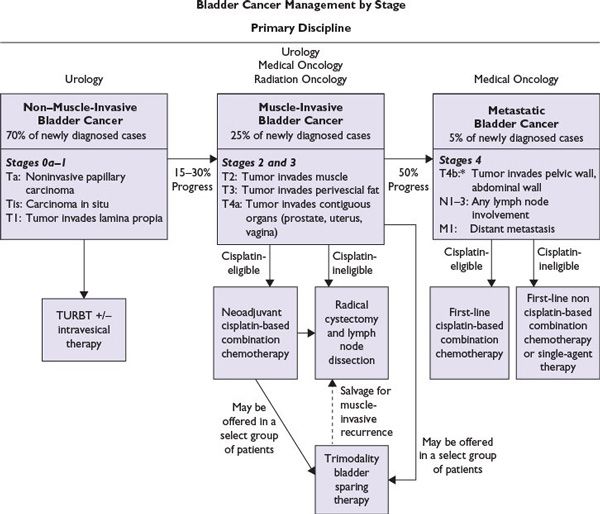For many people treatment involves some form of combination of those treatments. Localized invasive bladder cancer occurs when the cancer has spread to the muscle layer of the bladder.

Suggested Management Algorithm For Muscle Invasive Bladder Cancer Download Scientific Diagram
Immunotherapy helps your bodys immune system to identify attack and kill cancer cells.

Treatment for muscle invasive bladder cancer. Bladder removal cystectomy with chemotherapy or without chemotherapy Chemotherapy with radiation in addition to TURBT. Studies evaluating the impact of using geriatric assessments are needed. Late morbidity is comparable between older and younger patients.
Localised invasive bladder cancer means your cancer has grown into but not through the muscle layer of your bladder. If cancer is in only one part of the bladder a partial cystectomy may be done instead. Treatments for muscle invasive bladder cancer include.
Treatment options for muscle-invasive bladder cancer If you are diagnosed with stage 2 or stage 3 bladder cancer your healthcare team will discuss the best possible treatment options available to you. Common treatments for muscle-invasive bladder cancer include surgery radiation therapy and chemotherapy. Molecular biology and classification.
External beam radiotherapy combined with concomitant chemotherapy is an. For over 4 decades the systemic management of muscle-invasive and advanced bladder cancer has primarily consisted of platinum-based chemotherapy. Lymph nodes near the bladder are often removed as well.
From a normal urothelium loss of heterozygosity LOH of chromosome 9 has been associated with most urothelial cancers with two main pathways for their developmentNon-muscle-invasive urothelial carcinomas characterized by activation of the receptor. Over the past 10 years innovations in sequencing technologies have led to rapid genomic characterization of bladder cancer deepening our understanding of bladder cancer. Standard treatment for high-risk non-muscle-invasive bladder cancer is transurethral resection of bladder tumour followed by intravesical BCG immunotherapy.
PD-1 pathway activation is implicated in BCG resistance. Instead of medication being put directly into your bladder its put into a vein in your arm. For most patients treatment typically requires surgery along with chemotherapy to eliminate microscopic cancer in the patients body.
Some bladder cancers may be treated with a combination of chemotherapy and radiation therapy only. However maximal transurethral resection of bladder tumor TURBT was performed before NAC to define the pathology impacting the real. Research Clinical Trials.
Muscle-invasive bladder cancer treatment MIBC not metastatic A far more threatening form of bladder cancer MIBC is often treated by partial or complete removal of the bladder usually after pre-surgery neoadjuvant chemotherapy sometimes with concurrent radiation. Treatment by stage Localised invasive bladder cancer. 3 Partial or radical cystectomy.
For bladder cancer a type of immunotherapy called a checkpoint inhibitor is typically used. The type of surgery used to treat muscle-invasive bladder cancer depends on many different factors. This is called intravenous chemotherapy and can be used.
Reduced quality of life after cystectomy has made bladder preservation a popular research topic for muscle-invasive bladder cancer MIBC. This is called neoadjuvant chemotherapy. Radical cystectomy RC with extended pelvic lymph node dissection is considered to be the standard of care for nonmetastatic muscle invasive bladder cancer MIBC.
Previous research has indicated significant tumor downstaging after neoadjuvant chemotherapy NAC. When the cancer has invaded the muscle radical cystectomy removal of the bladder is the standard treatment. Before radiotherapy and surgery to shrink the size of.
You then have either. It hasnt spread to your lymph nodes or to other parts of your body. Other treatments such as chemotherapy may be given before or after surgery.
Chemotherapy kills cancer cells by killing fast growing cells. But this is possible in only a. Bladder cancer accounts for nearly 170000 deaths worldwide annually.
However despite high initial responses rates up to 50 of patients have recurrence or become BCG-unresponsive. Urothelial bladder cancer is a heterogeneous epithelial malignancy with variable clinical outcomes. The systemic treatments used for bladder cancer are.
The role of radiation therapy in this combined approach is to kill the bladder cancer cells in the bladder that are not visible to the surgeon. In some cases chemotherapy may be used during treatment for muscle-invasive bladder cancer. Your doctor will offer you chemotherapy with a combination of drugs if its suitable for you.
Elderly patients with muscle invasive bladder cancer treated with curative treatment have acceptable outcomes although it worsens with age. Treatment for muscle invasive bladder cancer When bladder cancer has invaded the muscle the most common treatment is surgery to remove the entire bladder. At the University of Chicago Medicine our bladder cancer team specializes in.
Historically radiation therapy alone has been used for muscle-invasive bladder cancer but current treatment usually involves a combined approach of maximal local surgery radiation and chemotherapy. In the KEYNOTE-057 study we evaluated pembrolizumab.

Chemoradiation Vs Radical Cystectomy For Muscle Invasive Bladder Cancer A Propensity Score Weighted Comparative Analysis Using The National Cancer Database Urology

Treating Elderly Patients With Muscle Invasive Bladder Cancer In Journal Of The National Comprehensive Cancer Network Volume 18 Issue 6 2020

Treatment Of High Grade Non Muscle Invasive Bladder Carcinoma By Standard Number And Dose Of Bcg Instillations Versus Reduced Number And Standard Dose Of Bcg Instillations Results Of The European Association Of Urology Research Foundation
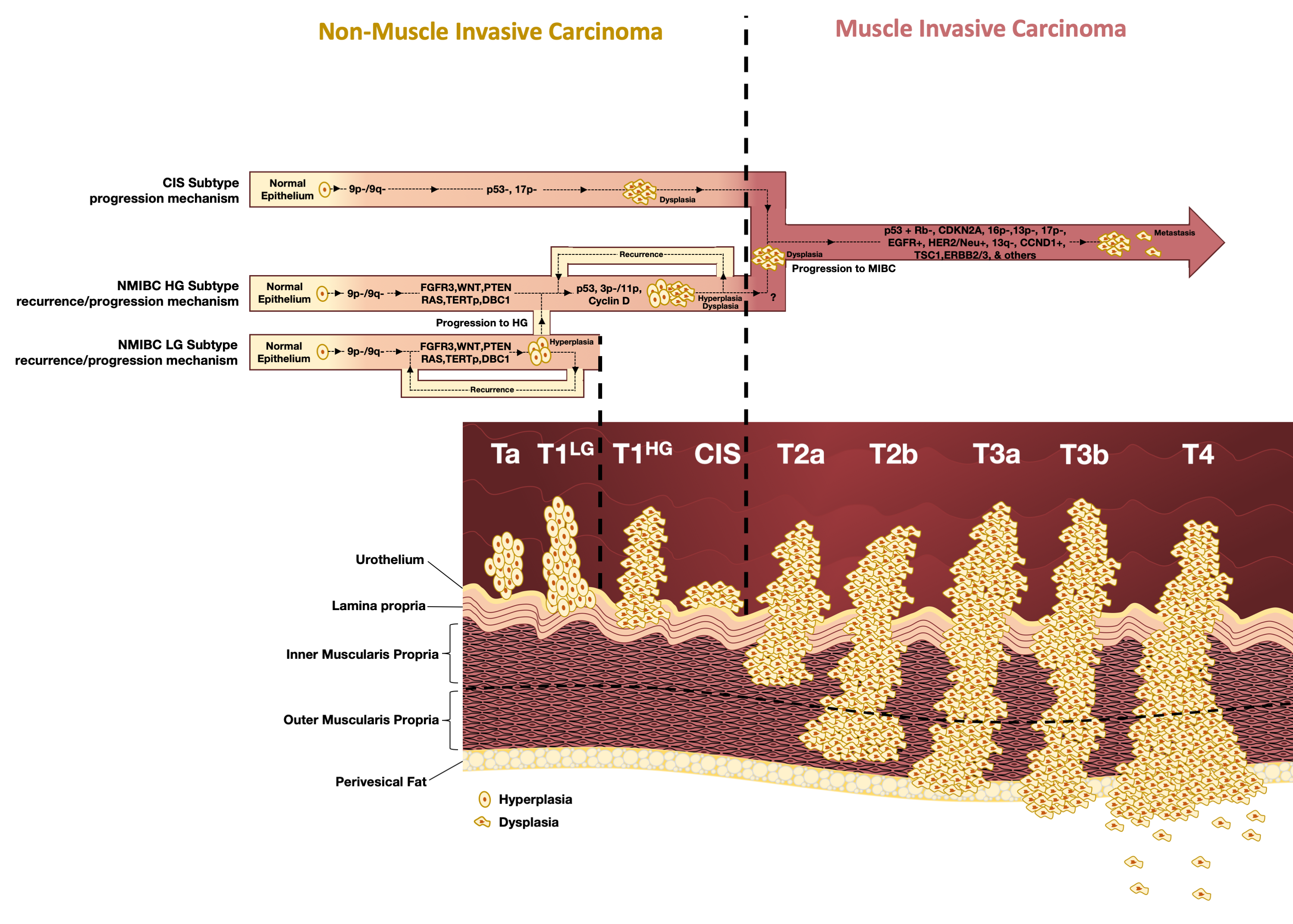
Diagnostics Free Full Text Biomarkers For Bladder Cancer Diagnosis And Surveillance A Comprehensive Review Html

Treatment Of Non Metastatic Muscle Invasive Bladder Cancer Aua Asco Astro Suo Guideline Sciencedirect

Nccn Guidelines Updates Management Of Muscle Invasive Bladder Cancer In Journal Of The National Comprehensive Cancer Network Volume 17 Issue 5 5 2019
Asco Gu 2020 Circulating Tumor Cells Opportunities In Muscle Invasive Bladder Cancer

Treatment Options And Outcomes In Nonmetastatic Muscle Invasive Bladder Cancer Trends In Cancer

Molecular Biomarkers In Bladder Preservation Therapy For Muscle Invasive Bladder Cancer The Lancet Oncology
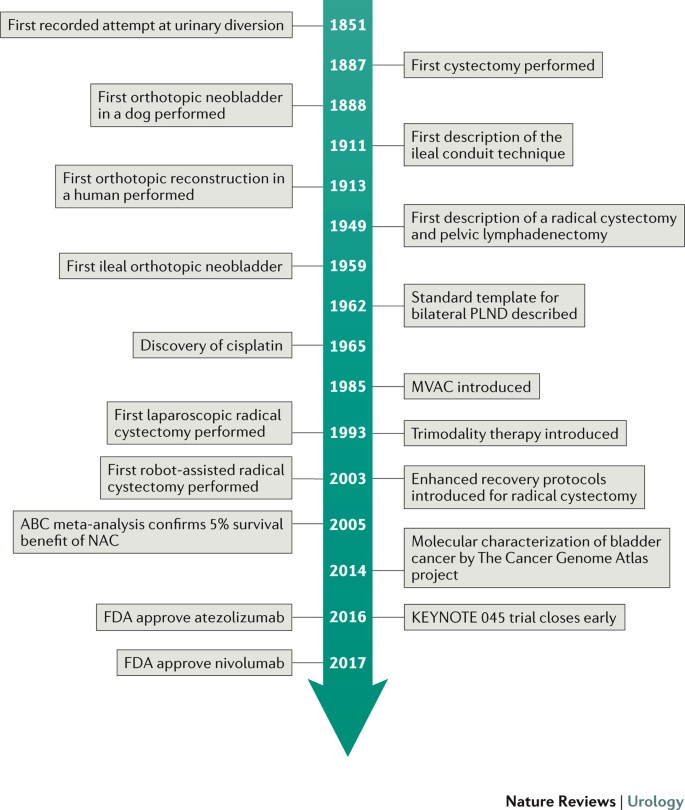
Landmarks In The Treatment Of Muscle Invasive Bladder Cancer Nature Reviews Urology

Executive Summary Of The American Radium Society Appropriate Use Criteria For Radiation Treatment Of Node Negative Muscle Invasive Bladder Cancer International Journal Of Radiation Oncology Biology Physics
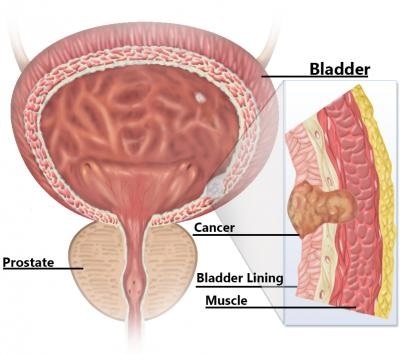
Muscle Invasive Bladder Cancer Mibc Diagnosis And Treatment

Systematic Review Of The Therapeutic Efficacy Of Bladder Preserving Treatments For Non Muscle Invasive Bladder Cancer Following Intravesical Bacillus Calmette Guerin European Urology

Treatment Algorithm For Non Muscle Invasive Bladder Cancer All Of The Download Scientific Diagram
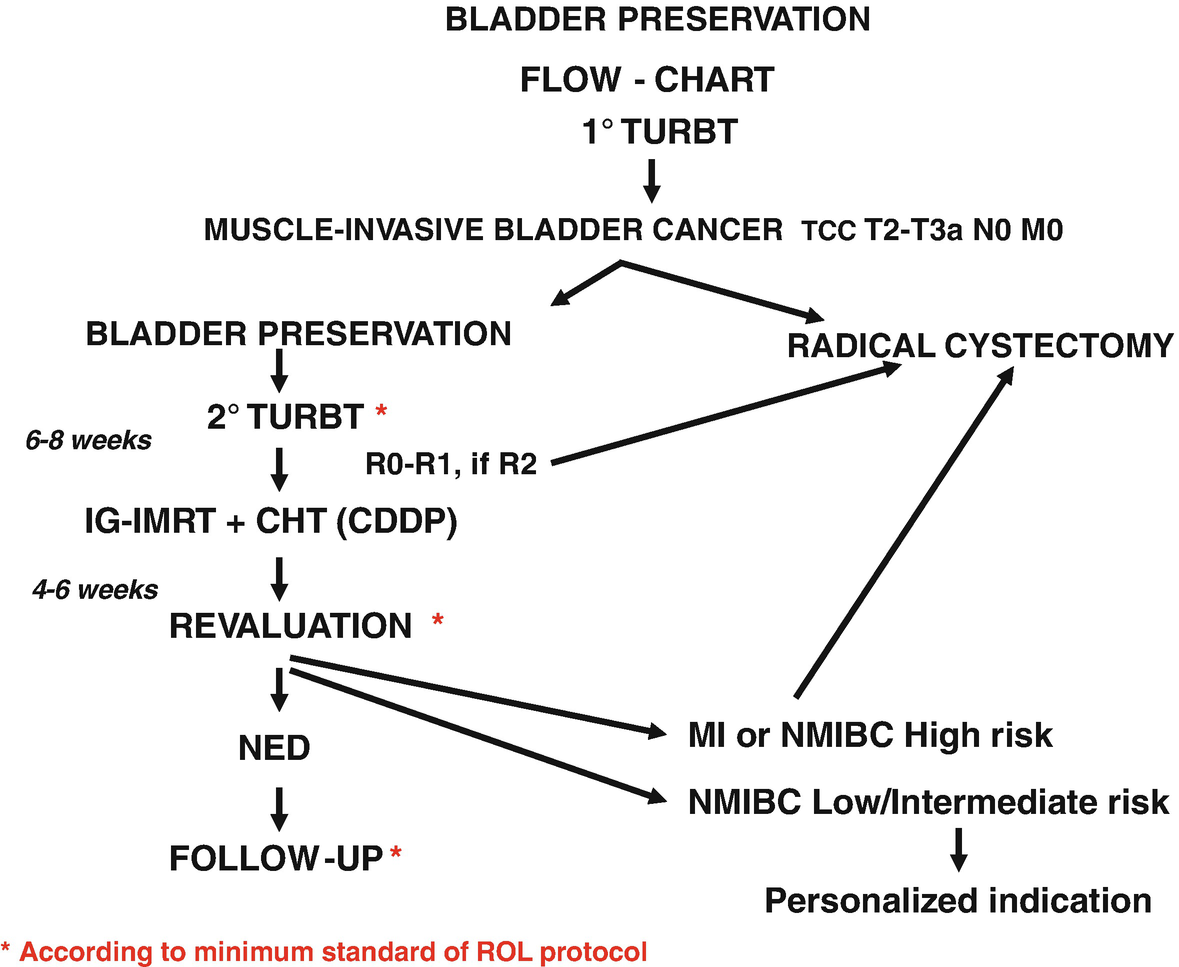
Radiotherapy For The Treatment Of Muscle Invasive Bladder Cancer Springerlink
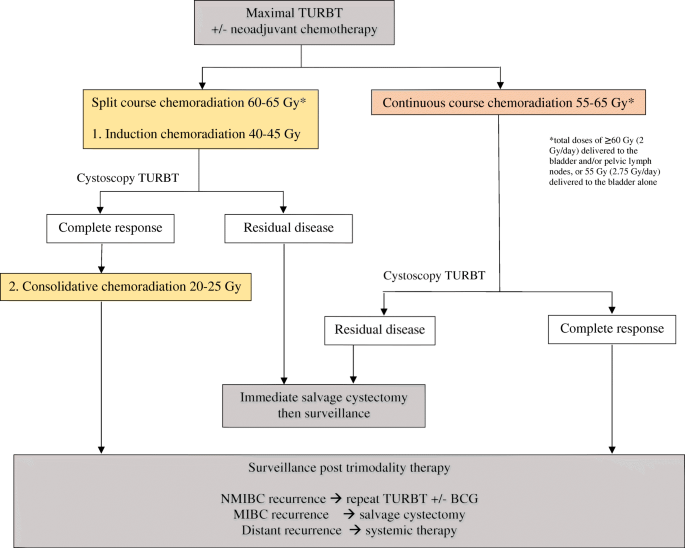
Trimodality Therapy For Muscle Invasive Bladder Cancer Recent Advances And Unanswered Questions Springerlink

Suggested Management Algorithm For Muscle Invasive Bladder Cancer Download Scientific Diagram

Treatment Algorithm For Non Muscle Invasive Bladder Cancer All Of The Download Scientific Diagram

